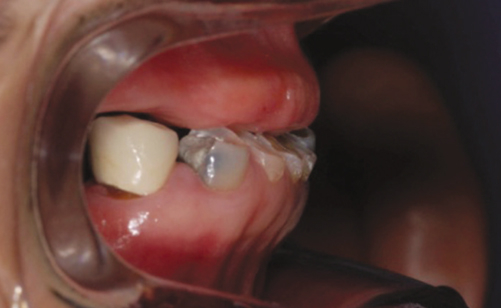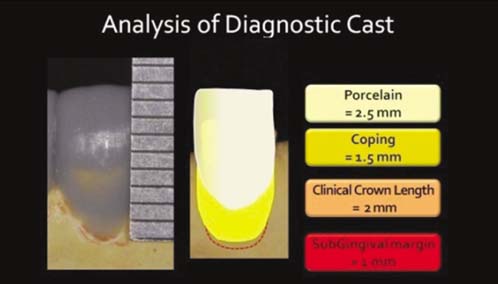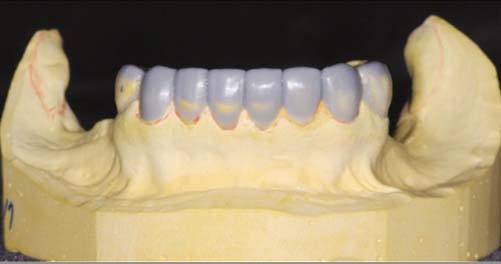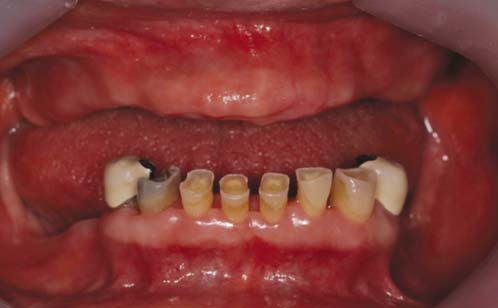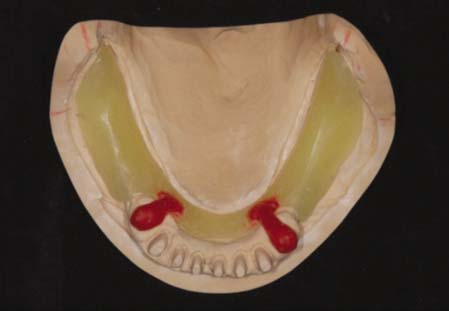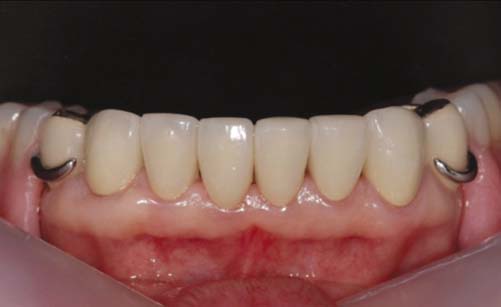J Adv Prosthodont.
2010 Jun;2(2):50-53. 10.4047/jap.2010.2.2.50.
Full mouth rehabilitation of partially and fully edentulous patient with crown lengthening procedure: a case report
- Affiliations
-
- 1Department of Prosthodontics, and Dental Research Institute, School of Dentistry, Seoul National University, Seoul, Korea. heosj@snu.ac.kr
- KMID: 1456756
- DOI: http://doi.org/10.4047/jap.2010.2.2.50
Abstract
- BACKGROUND
In order to restore severely attrited teeth properly, surgical intervention in the form of a crown-lengthening procedure may be required. And also, proper diagnosis and treatment sequencing is critical to obtain a successful results. Adequate diagnostic wax-up ensures good esthetics and healthy periodontal tissue. CASE DESCRIPTION: This clinical case report describes a diagnostically based protocol for restoration on mandibular anterior teeth with crown lengthening procedure and the treatment of partially edentulous mandible combined with an edentulous maxilla. In addition, the effort to prevent the combination syndrome was described. CLINICAL IMPLICATION: An interdisciplinary diagnosis and examination through visualization of the desired results ensure conservative and more predictable outcome.
Keyword
MeSH Terms
Figure
Reference
-
1. Davarpanah M, Jansen CE, Vidjak FM, Etienne D, Kebir M, Martinez H. Restorative and periodontal considerations of short clinical crowns. Int J Periodontics Restorative Dent. 1998. 18:424–433.2. Yeh S, Andreana S. Crown lengthening: basic principles, indications, techniques and clinical case reports. N Y State Dent J. 2004. 70:30–36.3. Assif D, Pilo R, Marshak B. Restoring teeth following crown lengthening procedures. J Prosthet Dent. 1991. 65:62–64.4. Kelly E. Changes caused by a mandibular removable partial denture opposing a maxillary complete denture. J Prosthet Dent. 1972. 27:140–150.5. Kwon KR, Kim YS, Kim CH, Kim HJ, Moon HS, Park SW, Park CJ, Song KY, Lee JS, Lee CH, Lim YJ, Chung MK, Jeong JH, Jeong CM, Cho IH, Cho HW, Choi DG, Han JH. Prosthodontic treatment for edentulous patients. 2007. 1st ed. Seoul: Shinhung international;426–428.6. Palmqvist S, Carlsson GE, Owall B. The combination syndrome: a literature review. J Prosthet Dent. 2003. 90:270–275.7. Ash M, Nelson S. Wheeler's Dental Anatomy. Physiology and Occlusion. 2003. 8th ed. Philadelphia: Saunders;230–238.8. Langer Y, Laufer BZ, Cardash HS. Modalities of treatment for the combination syndrome. J Prosthodont. 1995. 4:76–81.9. Chang IT, Heo SJ, Koak JY, Lee SB, Lee HY, Han DH, Hwang SH, Kye KS, Cho SA, Lim JS, Vang MS, Park HO, Park JM, Jin TH, Shin SY, Cho LR. Textbook of removable partial denture. 2004. 1st ed. Seoul: Jeesung Publishing Co.;373–382.
- Full Text Links
- Actions
-
Cited
- CITED
-
- Close
- Share
- Similar articles
-
- Full mouth rehabilitation of fully edentulous patient using implant hybrid prosthesis
- Full mouth rehabilitation of fully edentulous patient with implant-supported fixed prosthesis preceding bone graft: A case report
- Full mouth rehabilitation of a patient with severe tooth erosion with a digital crown lengthening guide
- Considerations in the selection of method for clinical crown lengthening
- Full mouth rehabilitation of mandibular edentulous patient using implant hybrid prosthesis


